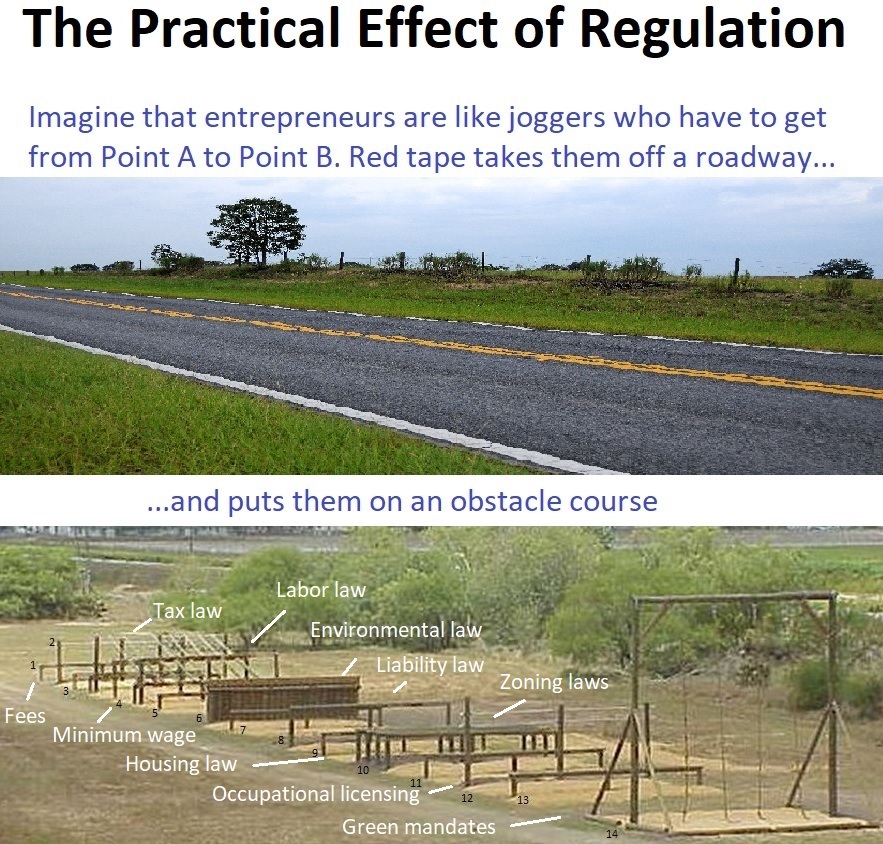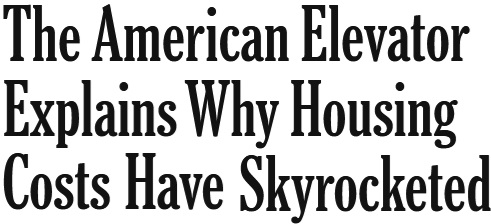Regulations can be theoretically justified. Proponents simply need to show that expected benefits will be greater than likely costs.
That’s the good news. The bad news is that very few examples of red tape pass this simple test.
The net result is that we get lots of costly rules and regulations, but few if any benefits.
Some sectors of the economy are especially disadvantaged by excessive red tape.
Today, we’re going to add housing to the list of sectors hurt by red tape. But we’re not going to focus on the cumulative impact of regulation. Instead, let’s look at how just one small slice of red tape is having a big negative effect.
Here are some excerpts from a New York Times column about elevator red tape by Stephen Jacob Smith.
Through my research on elevators, I got a glimpse into why so little new housing is built in America and why what is built is often of such low quality and at high cost. …These challenges are at the root of a mounting housing crisis that has spread to nearly every part of the country and is damaging our economic productivity… Special interests here have run wild with an outdated, inefficient, overregulated system. …New elevators outside the U.S. are typically sized to accommodate a person in a large wheelchair plus somebody standing behind it. American elevators have ballooned to about twice that size, driven by a drip-drip-drip of regulations, each motivated by a slightly different concern — first accessibility, then accommodation for ambulance stretchers, then even bigger stretchers. …Architects have dreamed of modular construction for decades, in which entire rooms are built in factories and then shipped on flatbed trucks to sites, for lower costs and greater precision. But we can’t even put elevators together in factories in America, because the elevator union’s contract forbids even basic forms of preassembly and prefabrication that have become standard in elevators in the rest of the world.
The most persuasive parts of his column involve comparisons with Europe.
Just like the U.S. pays far too much to build mass transit, we also pay far too much for elevators.
With around one million of them, the United States is tied for total installed devices with Italy and Spain. …Switzerland and New York City have roughly the same population, but the lower-rise alpine country has…twice as many passenger elevators. …Behind the dearth of elevators in the country that birthed the skyscraper are eye-watering costs. A basic four-stop elevator costs about $158,000 in New York City, compared with about $36,000 in Switzerland. A six-stop model will set you back more than three times as much in Pennsylvania as in Belgium. Maintenance, repairs and inspections all cost more in America, too. …America’s reputation for unbridled capitalism and a stereotype of Europe as a backwater of overregulation are often turned on their head in the construction sector. …Adopting the European elevator standard would open up the market to more competition and parts.
By the way, the solution is not to mandate the European regulatory approach, but rather to utilize “mutual recognition” so that builders can opt for that approach.
Though I think mutually reinforcing private regulation would be the best of all worlds.
Sadly, the United States suffers instead from the worst of all worlds. Absurdly expensive regulation combined with special favoritism for unions.
I’ll close by wondering why there are not states and cities in the United States showing how to fix this problem?
If both the Washington Post and Alexandria Ocasio-Cortez can be occasionally sensible on regulatory issues, surely a governor like DeSantis or Reynolds can take the lead on elevator deregulation?



